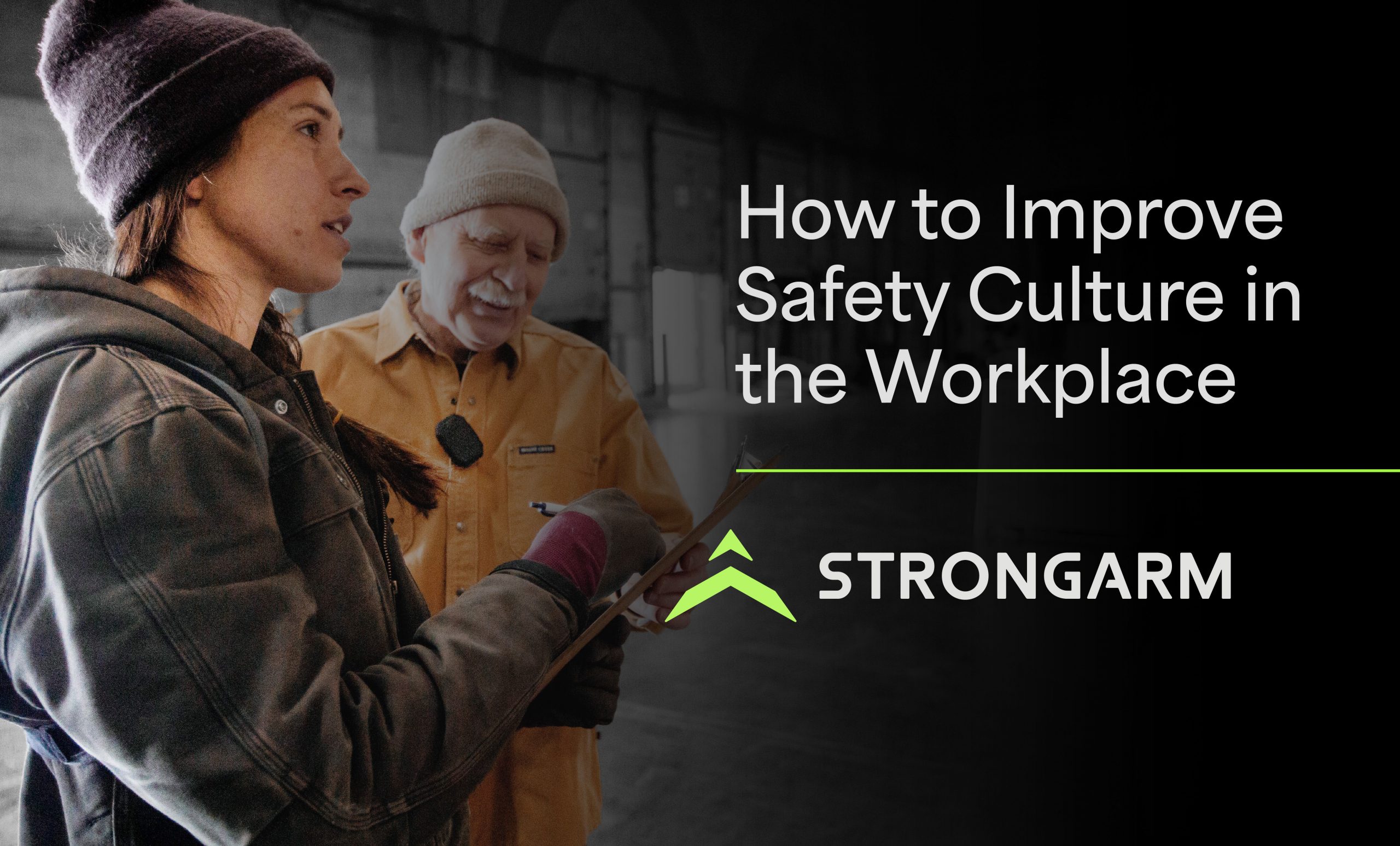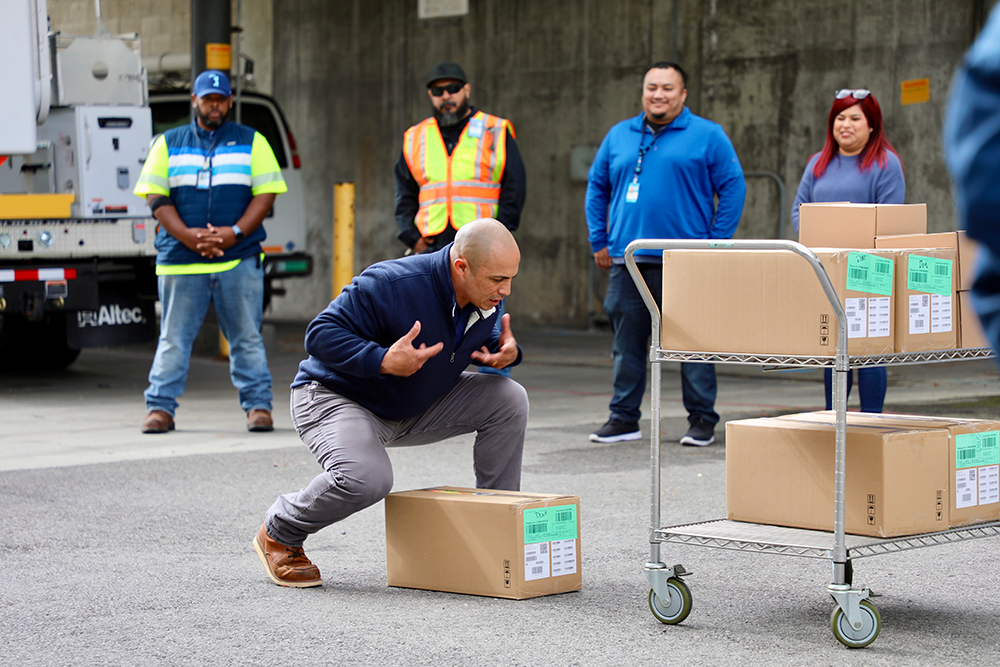How to Improve Safety Culture in the Workplace
What it means to instill a culture of safety in your workplace and the benefits of doing so.
Building a culture of safety in the workplace can improve your organization from the ground up. When employees feel safe at work, they are happier and perform better. Therefore, business leaders must prioritize creating a safety culture. Not only does it make for more satisfied employees, but it also helps prevent a business from being in legal trouble down the road if a hazardous situation leads to injury.
Safety culture in the workplace is worth the investment, giving you and your employees a morale boost by fostering a sense of security.
What Is a Safety Culture in the Workplace?
Fundamentally, safety culture means seeing workers as human beings and making changes from the top down to protect them. With reliable, caring managers who embrace the changes, an organization can feel almost like a second home for employees.
Building a workplace safety culture means instilling a company-wide mindset that focuses on safety beliefs, values and attitudes. Ideally, everyone will buy into the concept and want to contribute. A successful safety culture improves workplace health and safety and has numerous benefits for an organization.
Several cultural actions are essential for a positive safety culture to survive. Here’s how to improve safety culture in the workplace.
How To Improve Your Safety Culture
Several cultural actions are essential for a positive safety culture to survive. Here’s how to improve safety culture in the workplace.
Communicate Company Values
It is critical to give tangible examples of behaviors, decisions and attitudes that accurately reflect your organization’s vision. These will look different for every company, as each business has unique values.
If people at all levels of your organization reinforce these positive examples, it can help enforce the necessity of work health and safety policy statements.

Demonstrate Leadership
Organizational leaders who want to foster a culture of safety must set an example by motivating and inspiring others. Setting specific objectives and then deliberately pursuing them through your words and deeds will incentivize your employees to do the same.
There are a lot of practical ways leaders can demonstrate their goals.
- Seek staff engagement.
- Wear personal protective equipment correctly.
- Conduct safety meetings.
- Conduct risk assessments.
- Take ownership for mistakes and successes alike.
Clarify Behaviors
When you set out expectations for a new culture, make sure to define the expected and required behaviors for employees at all levels.
On top of that, be consistent and transparent in your communication, whether through email, memos, conversations, meetings or other options.
Personalize Safety Outcomes
It can be tricky for employees to buy into your safety-oriented culture if they don’t understand its benefits. When defining your new culture, define its specific, relevant advantages for your employees as individuals, and show how the changes will prevent and eliminate risks and hazards.
Have Positive Safety Attitudes
You’ll render the other tips on this list pointless if you demonstrate a negative or dismissive attitude toward the new safety culture. Encourage your employees to express their concerns and have open conversations. Convey to them that you are trying to ensure a happy, healthy and accident-free workplace. You should be supportive in a way that makes them feel like you have their best interests at heart.
Be Accountable
Gather lots of feedback from your employees and use their input to improve the process and culture. Doing so will increase their trust in you and make them more likely to buy into the safety culture. Those in leadership positions need to engage with their employees, build relationships and demonstrate support.
Increase Risk Awareness and Preventive Behaviors
Provide your employees a comprehensive understanding of possible outcomes with and without the new health and safety protocols. This contrast will give them a more accurate perspective and positive attitude in adopting the safety culture. Specific communication will give your safety culture a much higher chance of success and increase morale among your employees despite the significant change.
Monitor, Review and Reflect
Once your safety culture is in place, it’s not time to rest on your laurels. Continuously revisit your policies and how your employees feel about them. Armed with that information, you should adjust your guidelines as necessary to best serve your employees. Doing so will help maintain a positive attitude throughout your organization, as employees feel their leaders are still invested in their lives.

How to Create a Safety Culture in the Workplace
Creating a safety culture is a challenging process that requires a lot of work from your organizational leadership. For the success of your business, it is critical to work on building a safety culture at work for your employees.
Here are three steps to building a safety culture that will holistically benefit your company.
Use “Safety Champions” to Raise Safety Awareness
As a casual way to grow morale within your company, identify employees who support and encourage those around them and name them your “safety champions.” These are the people who will work with you to get your entire organization on board with a shared goal. Having colleagues who promote a safety culture will give your employees a mindset that encourages them to look out for each other.
Implement Safety Policies and Procedures That Reinforce Your Message
Safety champions need a well-defined set of policies and procedures to get everyone else on board with your safety culture.
When building your new culture, you should begin by analyzing every facet of your organization and noting any potential risks or hazards. Your solutions can stem from that information and form the backbone of policies that will keep your employees much safer. Outside specific policies, having safety education and training as part of your workflow will support responsible practices and increase worker awareness. Your goal is to internalize a safety-first attitude.
Reward Safe Behavior
After asking your employees to put in the work of implementing so many new policies and procedures, you must follow up such a process with incentives like bonuses, gift cards or time off. Rewarding employees for following safe practices will encourage them to continue.

Improve Workplace Safety With Our SafeWork System
At StrongArm Tech, we want your workplace to be the safest it can be. We believe the thousands of workplace injuries that happen every day are preventable, and we want to give you the tools to do so in your facilities.
We have created durable safety wearables that provide data to help prevent injuries. On average, we have provided companies with a 52% year-over-year injury reduction.
Our data is actionable and allows you to be proactive in building a safety culture and intervening actions you take to prevent future injury. We help you set the foundation so you can create a sustainable safety culture long into the future. Request a trial today.



